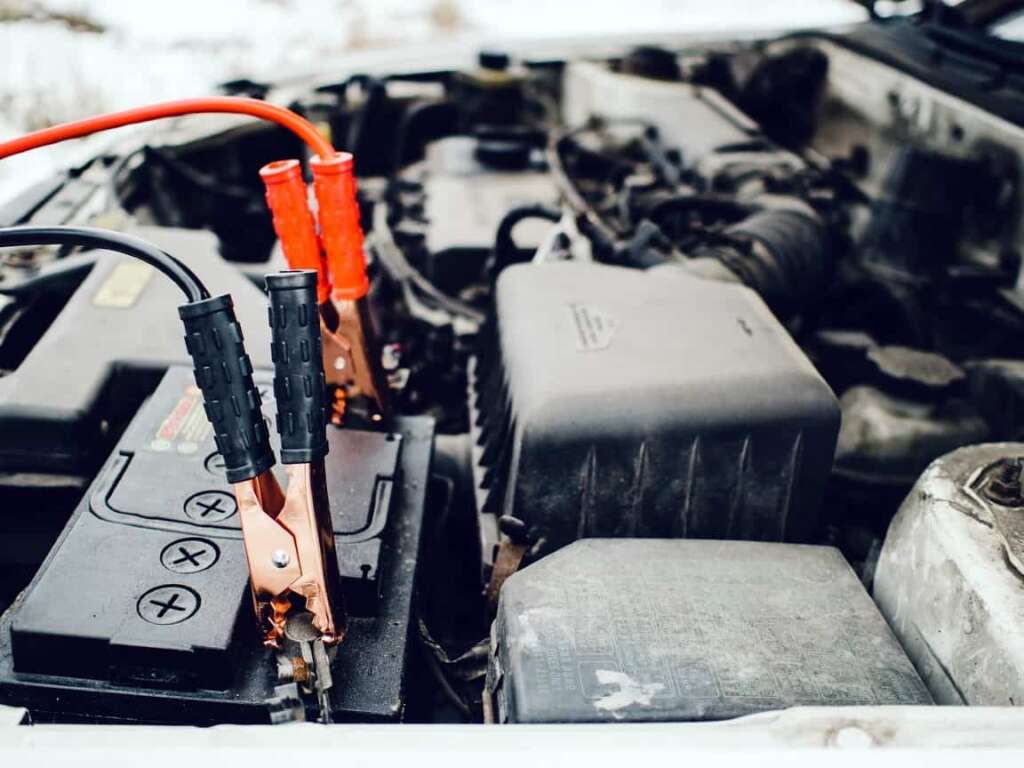Car batteries are one of the most overlooked and undermaintained parts of a car.
Most people do a good job on keeping their cars in good technical shape, however, they’re so focused on the engine or the car’s exterior that they forget to take care of the car’s battery, which often times leads to expensive repairs and electrical problems down the line.
Let me ask you a question: when was the last time you’ve check the electrolyte level on your car’s lead acid battery?
Hopefully you’ve answered ‘last month’, however, if your answer was along the lines of ‘what electrolyte level?’ then this article is for you.
In this brief article, we’ll hopefully give you a solid understanding of how to maintain your car’s lead acid battery and how to keep it working for as long as possible with a short but comprehensive car lead acid battery maintenance checklist.
Lead Acid Battery Maintenance Checklist
- First of all, make sure your car’s battery is fully charged at all times. Your car’s alternator is not designed to fully charge the battery – it’s only designed to supply electrical power to your car once the engine is running and to keep the battery at around 90% charge.
This is why keeping your car’s lead acid battery (or any other type of battery) fully charged at all times is so important. If you neglect charging your car’s battery, the alternator has to work at full power all the time just to barely charge it to around 90% – this drastically decreases the longevity of your car’s alternator and leads to premature alternator failure. This is the reason why it’s always recommended to also replace the battery when you’re replacing an alternator. - Regularly (at least once a month) check the level of charge on your lead acid battery. Do this by touching the leads of your multimeter to the positive and the negative terminal of your lead acid battery with the engine and ignition off. A fully charged battery should measure at 12.5–12.8V – anything less indicates it’s time to charge the battery.
- Regularly (at least once every month) check the electrolyte level on your lead acid battery. This is probably the most overlooked but one of the most important factors in lead acid battery maintenance.
The level of electrolyte should be 3/8 inch (10mm) above the lead plates. If you find yourself having to add distilled water often and in large quantities, check if the voltage regulator on your car’s alternator isn’t overcharging and boiling your battery. - Regularly (once every month) check the charging system of your car. With the engine running, your car’s lead acid battery should always be charging at 13.9 to 14.4 V. For more information, symptoms, and reasons behind a bad charging system, check out our article by clicking here.
- Regularly (once a month if needed) charge your car’s lead acid battery if your car is only used for short trips around town, has additional power-consuming equipment installed, or is subjected to frequent start/stop conditions – your OEM alternator might not be able to keep the battery charged.
- Check if your battery is secured in place once in a while. Your lead acid battery should always be secured properly – no movement is allowed.
- Regularly check your battery terminals for corrosion. Corroded battery terminals cause electrical problems and ultimately produce heat, which might melt your battery terminals altogether.
Additional Lead Acid Battery Operating Tips
- Unused lead acid batteries need to be stored fully charged in a dry and cool place. At 32 degrees Fahrenheit (0 degrees Celsius) lead acid batteries almost don’t lose charge. If you’re storing your unused lead acid battery inside the car, make sure you disconnect the ground.
- Avoid cranking your engine for longer than 10 – 15 seconds. Doing so is bad for your starter and will discharge your battery extremely fast.
- Always keep your lead acid battery upright and never store it at an angle greater than 45 degrees.
- Avoid adding additional chemicals to boost lead acid battery performance – they are gimmicks, unnecessary, and will do more damage than good in the long run.
How to Safely and Properly Charge a Lead Acid Battery
Just in case you need to charge your car’s lead acid battery and you’re unsure of the proper procedure, then this might be of use to you.

Any “smart” lead acid battery charger is a good option to use as they are cheap and take care of the required amperage for you, however, in case you might be charging you battery with an older charger which requires for you to manually set the charging current then here is the procedure:
- Charging a lead acid battery while it’s still connected and inside the vehicle is not recommended, so make sure your battery is out of the car.
- Place your lead acid battery in a well-ventilated room. Lead acid batteries produce hydrogen sulfide (H2S), which is a flammable gas. Usually, the concentration of hydrogen sulfide while charging is minimal and harmless, however, in some cases, the concentration might be higher and could create an explosive environment – this is why you should always charge your car’s lead acid battery outside the vehicle and in a well-ventilated area.
- Make sure there are no open flame inside the room or anything else that could ignite explosive gases that are the byproduct of charging.
- Connect the positive (+) alligator clip of your charger to the positive (+) terminal of your lead acid battery, then connect the negative (-) alligator clip of your charger to the negative (-) terminal of the battery. After both terminals are connected, turn on the battery charger – this way we avoid creating sparks that could ignite any explosive gases around you.
- Set the charging current on your battery charger to the 1/10 of your lead acid battery Ah rating, for example, the maximum charging current for a 44 Ah lead acid battery should be no more than 4.4 Amps.
- If the temperature of your lead acid battery reaches 120 degrees Fahrenheit (50 degrees Celsius) stop charging the battery immediately and let it cool off before continuing the charging process.
- Stop the charging process if the voltage of the lead acid battery does not increase for two hours straight – at that point, the battery is fully charged.
- When you’re done charging the battery, turn off your battery charger first and only then disconnect it from the battery. Again, this is done to avoid creating sparks that could ignite explosive gases.
Final Words
This concludes the short article on car lead acid battery maintenance.
Hopefully, next time you’ll remember to give your car’s lead acid battery some attention with proper lead acid battery maintenance – it only takes a few minutes to do and potentially saves you hundreds of dollars a year.

Eddie is the co-founder of CarCareCamp.com, and the site’s primary contributor.
Under his belt, Eddie has a bachelor’s degree in Automotive Electronics Engineering and almost a decade of experience working as a semi-truck technician (specializing in electrics).
